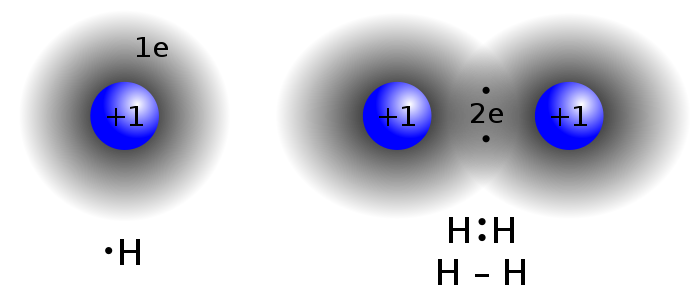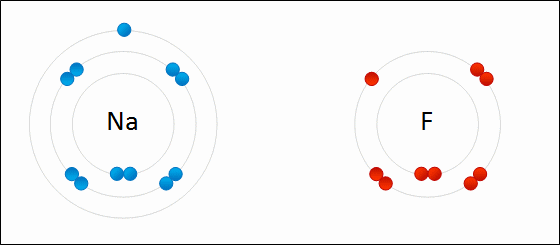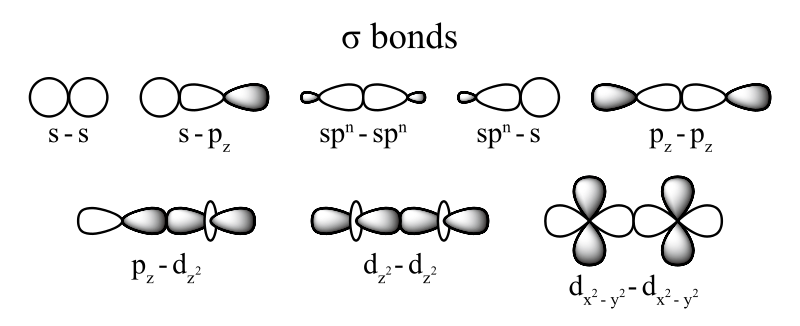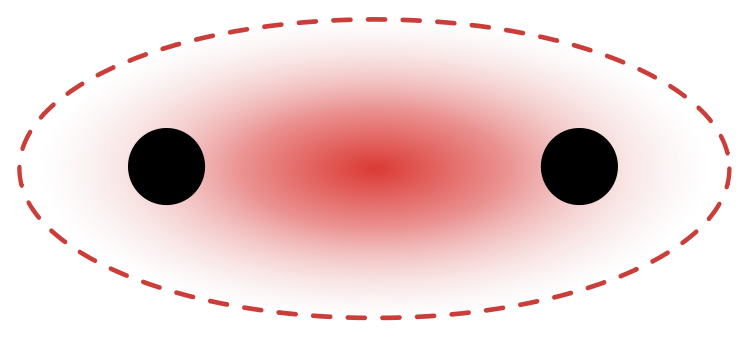Do Covalent Bonds Conduct Electricity
45 The Covalent Bond
LumenLearning
Comparison between Covalent and Ionic Compounds
Covalent and ionic compounds have distinct physical properties.
LEARNING OBJECTIVES
Identify element pairs which are probable to class ionic or covalent bonds
KEY TAKEAWAYS
Key Points
- Ionic compounds are formed from strong electrostatic interactions between ions, which result in higher melting points and electric conductivity compared to covalent compounds.
- Covalent compounds take bonds where electrons are shared betwixt atoms. Due to the sharing of electrons, they showroom feature physical properties that include lower melting points and electric conductivity compared to ionic compounds.
Key Terms
- valence electrons: Electrons in the outermost chief energy (valence) level of an atom that tin can participate in the formation of chemical bonds with other atoms.
- : Atoms lose, gain, or share electrons in order to have a full valence level of viii electrons. Hydrogen and helium are exceptions because they can hold a maximum of ii valence electrons.
- : The tendency of an cantlet or molecule to concenter electrons and form bonds.
Two Classes of Compounds
Compounds are defined every bit substances containing two or more than dissimilar chemical elements. They accept distinct chemical structures characterized by a stock-still ratio of atoms held together past chemical bonds. Here, we hash out two classes of compounds based on the bail type that holds the atoms together: ionic and covalent.
Covalent Compounds
Covalent bonds are characterized by the sharing of electrons betwixt ii or more atoms. These bonds mostly occur between nonmetals or between ii of the same (or like) elements.Two atoms with similar electronegativity willnotsubstitution an electron from their outermost shell; the atoms insteadshareelectrons so that their valence electron beat is filled.
Examples of compounds that contain only covalent bonds are methane ([latex]\text{CH}_4[/latex]), carbon monoxide ([latex]\text{CO}[/latex]), and iodine monobromide ([latex]\text{IBr}[/latex]).

Ionic Compounds
Ionic bonding occurs when there is a large difference in electronegativity betwixt two atoms. This big difference leads to the loss of an electron from the less electronegative atom and the gain of that electron by the more electronegative atom, resulting in ii ions. These oppositely charged ions feel an attraction to each other, and this electrostatic attraction constitutes an ionic bond.
Ionic bonding occurs between a nonmetal, which acts equally an electron acceptor, and a metallic, which acts every bit an electron donor. Metals have few valence electrons, whereas nonmetals have closer to 8 valence electrons; to hands satisfy the octet rule, the nonmetal will take an electron donated past the metal. More than ane electron can be donated and received in an ionic bail.
Some examples of compounds with ionic bonding include [latex]\text{NaCl}[/latex], [latex]\text{KI}[/latex], [latex]\text{MgCl}_2[/latex].

Consequence on Physical Properties
Covalent and ionic compounds tin be differentiated hands because of their different physical properties based on the nature of their bonding. Hither are some differences:
- At room temperature and normal atmospheric pressure, covalent compounds may be as a solid, a liquid, or a gas, whereas ionic compounds exist only as solids.
- Although solid ionic compounds do non conduct electricity because there are no free mobile ions or electrons, ionic compounds dissolved in water make an electrically conductive solution. In contrast, covalent compounds do non exhibit any electrical conductivity, either in pure form or when dissolved in water.
- Ionic compounds be in stable crystalline structures. Therefore, they take higher melting and humid points compared to covalent compounds.
Unmarried Covalent Bonds
Single covalent bonds are sigma bonds, which occur when one pair of electrons is shared betwixt atoms.
LEARNING OBJECTIVES
Place the four orbital types used in covalent bail formation
KEY TAKEAWAYS
Key Points
- Covalent bonds occur when electrons are shared between two atoms. A unmarried covalent bond is when only one pair of electrons is shared betwixt atoms.
- A sigma bond is the strongest type of covalent bond, in which the atomic orbitals straight overlap between the nuclei of two atoms.
- Sigma bonds can occur between any kind of atomic orbitals; the only requirement is that the atomic orbital overlap happens directly between the nuclei of atoms.
Fundamental Terms
- sigma bail: A covalent bail whose electron density is concentrated in the region direct betwixt the nuclei.
- : A blazon of chemic bail where two atoms are continued to each other by the sharing of 2 or more electrons.
- atomic orbital: A region in space around the atom'southward nucleus where there is a probability of finding an electron.
Hierarchical Structure of the Atom
At that place are 4 hierarchical levels that describe the position and free energy of the electrons an cantlet has. Here they are listed along with some of the possible values (or messages) they can take:
- Chief energy levels (1, 2, 3, etc.)
- Sublevels (s, p, d, f)
- Orbitals
- Electrons
Principal energy levels are made out of sublevels, which are in turn made out of orbitals, in which electrons are found.
Atomic Orbitals
An atomic orbital is divers as the probability of finding an electron in an expanse effectually an atom's nucleus. Generally, orbital shapes are drawn to depict the region in space in which electrons are likely to exist institute. This is referred to every bit "electron density."

Atomic Orbitals
Covalent bonding occurs when ii atomic orbitals come up together in shut proximity and their electron densities overlap. The strongest type of covalent bonds are sigma bonds, which are formed by the directly overlap of orbitals from each of the 2 bonded atoms. Regardless of the diminutive orbital type, sigma bonds tin occur as long as the orbitals straight overlap between the nuclei of the atoms.

Single covalent bonds occur when i pair of electrons is shared betwixt atoms every bit part of a molecule or compound. A single covalent bail tin can be represented by a single line between the two atoms. For example, the diatomic hydrogen molecule, [latex]\text{H}_2[/latex], can exist written as [latex]\text{H-H}[/latex] to indicate the single covalent bond betwixt the 2 hydrogen atoms.

Double and Triple Covalent Bonds
Double and triple bonds, comprised of sigma and pi bonds, increase the stability and restrict the geometry of a compound.
LEARNING OBJECTIVES
Draw the types of orbital overlap that occur in single, double, and triple bonds
KEY TAKEAWAYS
Key Points
- Double and triple covalent bonds are stronger than unmarried covalent bonds and they are characterized by the sharing of four or half dozen electrons betwixt atoms, respectively.
- Double and triple bonds are comprised of sigma bonds betwixt hybridized orbitals, and pi bonds betwixt unhybridized p orbitals. Double and triple bonds offer added stability to compounds, and restrict any rotation around the bond centrality.
- Bond lengths between atoms with multiple bonds are shorter than in those with unmarried bonds.
Key Terms
- bond strength: Directly related to the amount of energy required to break the bond between two atoms. The more energy required, the stronger the bail is said to be.
- : The distance between the nuclei of two bonded atoms. Information technology can be experimentally determined.
- orbital hybridization: The concept of mixing atomic orbitals to form new hybrid orbitals suitable for the qualitative description of atomic bonding properties and geometries.
- atomic orbitals: The physical region in space around the nucleus where an electron has a probability of being.
Double and Triple Covalent Bonds
Covalent bonding occurs when electrons are shared between atoms. Double and triple covalent bonds occur when four or six electrons are shared betwixt two atoms, and they are indicated in Lewis structures by drawing two or three lines connecting one atom to some other. It is of import to note that only atoms with the need to gain or lose at least two valence electrons through sharing tin participate in multiple bonds.
Physical Backdrop of Covalent Molecules
The covalent bonding model helps predict many of the physical properties of compounds.
LEARNING OBJECTIVES
Discuss the qualitative predictions of covalent bond theory on the boiling and melting points, bond length and strength, and electrical conductivity of molecules
Cardinal TAKEAWAYS
Key Points
- The Lewis theory of covalent bonding says that the bond forcefulness of double bonds is twice that of unmarried bonds, which is not truthful.
- General physical backdrop that tin can be explained by the covalent bonding model include boiling and melting points, electrical electrical conductivity, bond forcefulness, and bond length.
Key Terms
- : The distance between the nuclei of 2 bonded atoms. It tin be experimentally determined.
- intermolecular forces: Attractive forces or interactions between different molecules in a sample of a substance. The strength of these interactions is an of import factor that determines the substance'due south physical properties.
- bond strength: Straight related to the amount of energy required to break the bond between two atoms. The more energy required, the stronger the bail is said to exist.
- : Atoms lose, gain, or share electrons in guild to take a full valence shell of eight electrons. Hydrogen is an exception considering it tin can hold a maximum of 2 electrons in its valence level.
First described by Gilbert Lewis, a covalent bail occurs when electrons of dissimilar atoms are shared betwixt the two atoms. These cases of electron sharing can be predicted past the octet rule. The octet rule is a chemic dominion that generalizes that atoms of low atomic number (< twenty) will combine in a way that results in their having 8 electrons in their valence shells. Having 8 valence electrons is favorable for stability and is like to the electron configuration of the inert noble gases. In a covalent bond, the shared electrons contribute to each atom's octet and thus raise the stability of the compound.
The Lewis bonding theory tin explain many properties of compounds. For example, the theory predicts the existence of diatomic molecules such as hydrogen, [latex]\text{H}_2[/latex], and the halogens ([latex]\text{F}_2[/latex], [latex]\text{Cl}_2[/latex], [latex]\text{Br}_2[/latex], [latex]\text{I}_2[/latex]). A H atom needs i additional electron to fill up its valence level, and the halogens demand 1 more than electron to make full the octet in their valence levels. Lewis bonding theory states that these atoms volition share their valence electrons, effectively allowing each atom to create its own octet.
Several physical properties of molecules/compounds are related to the presence of covalent bonds:
- Covalent bonds between atoms are quite stiff, but attractions between molecules/compounds, or intermolecular forces, can be relatively weak. Covalent compounds generally have low boiling and melting points, and are found in all three physical states at room temperature.
- Covalent compounds do non deport electricity; this is because covalent compounds exercise not accept charged particles capable of transporting electrons.
- Lewis theory also accounts for bond length; the stronger the bond and the more electrons shared, the shorter the bail length is.
Even so, the Lewis theory of covalent bonding does not account for some observations of compounds in nature. The theory predicts that with more than shared electrons, the bond between the two atoms should be stronger. According to the theory, triple bonds are stronger than double bonds, and double bonds are stronger than single bonds. This is truthful. However, the theory implies that the bond strength of double bonds is twice that of single bonds, which is not truthful. Therefore, while the covalent bonding model accounts for many physical observations, information technology does have its limitations.
Do Covalent Bonds Conduct Electricity,
Source: https://uen.pressbooks.pub/introductorychemistry/chapter/the-covalent-bond/
Posted by: pettyhattlem88.blogspot.com


0 Response to "Do Covalent Bonds Conduct Electricity"
Post a Comment